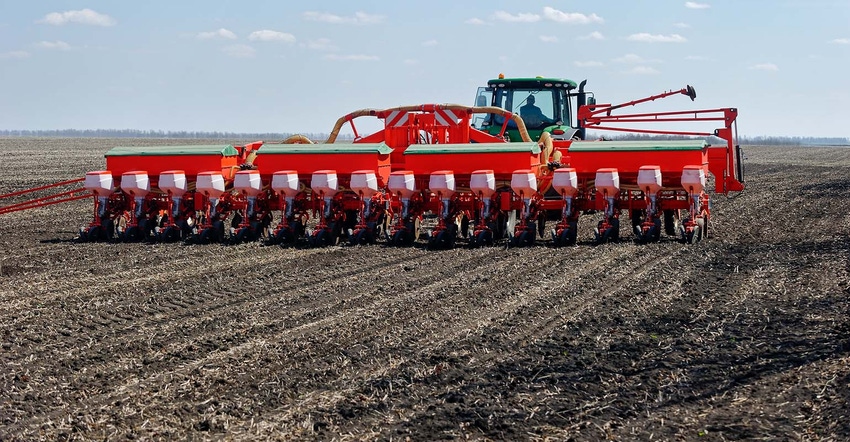
After the February USDA report was released most producers were likely a bit aggravated with USDA. Given huge export sales to China between the January and February reports, thoughts the USDA would show a much tighter carry-out for this marketing year were expected.
While carry came down in that report by 50 million bushels (to 1.502 billion bushels), USDA was 100 million bushels in excess of the average trade guess. The next big potential market-mover on the calendar was this week’s USDA Outlook Forum. Some producers were skeptical.
However, as we close the week on February 19th, I can’t imagine many producers complaining. Before I go into the numbers in detail, I need to point out these aren’t survey based. They’re simply the outlook the USDA puts out every year at this time.
Let’s start with corn
While USDA essentially had to use the numbers they had put out for the February report for this marketing year (2020/21), the trade was anticipating acreage and demand calculations for the upcoming marketing year (2021/22). With acreage on corn pegged at 92 million acres for this coming spring, a big yield of 179.5 provides for an estimated production of 15.15 billion bushels -- about a billion more than the crop we just harvested last fall.
Keep in mind the 20/21 crop was a half-billion bigger than the 19/20 crop.
Given this large production number, one may worry the carry-out could balloon. However, the 1.5 billion carry for 20/21 only increased to 1.55 bbu for 21/22.
The reason carry didn’t balloon? Demand numbers were increased substantially. With feed & residual increasing by 200 million bushels for this coming marketing year to 5.85 billion bu. while corn usage for ethanol increased to 5.2 bbu, domestic usage for corn is set to increase by 450 mb to 12.475 bbu. Exports have been hotly contested by many in and around the markets. They were pegged at 2.65 bbu, which would be an increase from this year’s 2.6 bbu.
With total usage up by a half-billion bushels and production up about a billion bushels, one may ask: Why was carry in essence unchanged?
Good question, but it’s an easy answer. We’re carrying much less corn into next marketing year than we have since coming out of the drought of 2012. So with a smaller carry-in, it makes this strong demand situation not go away in short order.
Soybean supplies tighten
For soybeans, the situation is certainly tight and not going to loosen anytime soon. USDA’s estimate for spring planted acreage of 90 million acres was a touch bigger than the average trade guess. With 90 million acres planted and 50.8 as a yield, total production was forecast at 4.525 bbu. Given demand didn’t fluctuate more than 50 million bushels in any category, USDA is banking on solid soybean demand continuing to build.
Domestic demand is forecasted to increase just 9 mb at 2.334 bbu. Exports of 2.2 billion bushels are set to drop by 50 mb from the 2.25 from the marketing year we are currently in. The same logic applies to the bean ledger as the 2020/21 crop had a carry-in of 525 mb while the 21/22 crop is forecasted to see a carry-in of just 120 mb.
Small impact
The overall impact of USDA’s baseline numbers is rather small. Maybe the big takeaway is that these numbers could have hurt this impressive market, and they didn’t. While these numbers are still new, there was no negative influence.
Given strong demand and resulting tight stocks/usage ratios for corn and especially beans, it appears big production for 2021 is viewed as a must. Any hiccups would likely see major buying interest. So the big question is, were producers still irritated with USDA after the Outlook forum numbers were released?
My hope is we see the Outlook numbers for what they are -- an accurate depiction of what strong demand looks like in a time of solid production.
Reach Matt Bennett at 815-665-0462 or [email protected]
The risk of loss in trading futures and/or options is substantial and each investor and/or trader must consider whether this is a suitable investment. AgMarket.Net is the Farm Division of John Stewart and Associates (JSA) based out of St Joe, MO and all futures and options trades are cleared through ADMIS in Chicago IL. This material has been prepared by an agent of JSA or a third party and is, or is in the nature of, a solicitation. By accepting this communication, you agree that you are an experienced user of the futures markets, capable of making independent trading decisions, and agree that you are not, and will not, rely solely on this communication in making trading decisions. Past performance, whether actual or indicated by simulated historical tests of strategies, is not indicative of future results. Trading infromation and advice is based on information taken from 3rd party sources that are believed to be reliable. We do not guarantee that such information is accurate or complete and it should not be relied upon as such. Trading advice reflects our good faith judgment at a specific time and is subject to change without notice. There is no guarantee that the advice we give will result in profitable trades. The services provided by JSA may not be available in all jurisdictions. It is possible that the country in which you are a resident prohibits us from opening and maintaining an account for you.
The opinions of the author are not necessarily those of Farm Futures or Farm Progress.
About the Author(s)
You May Also Like






